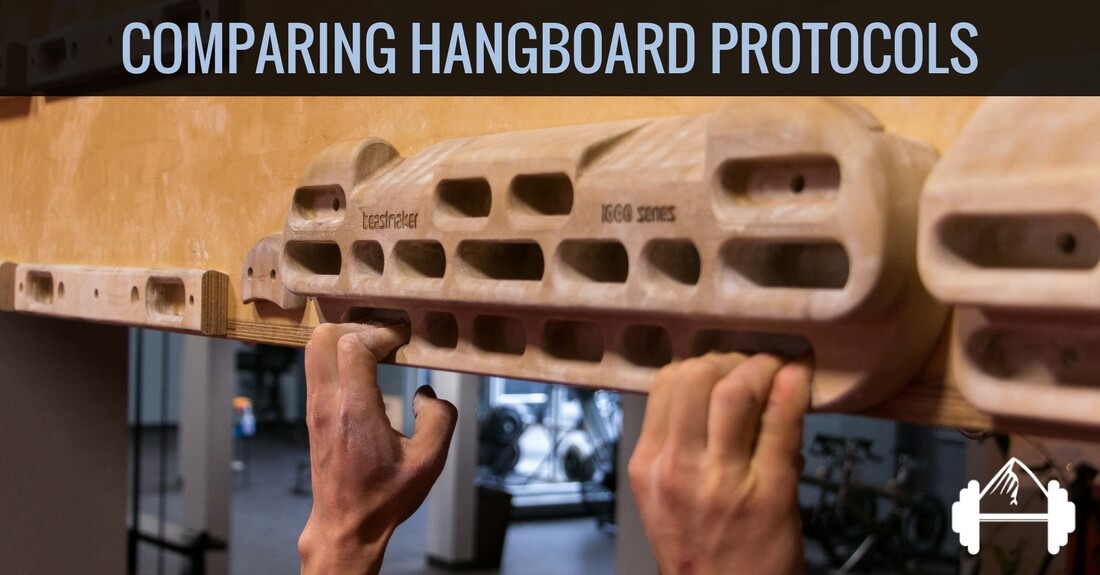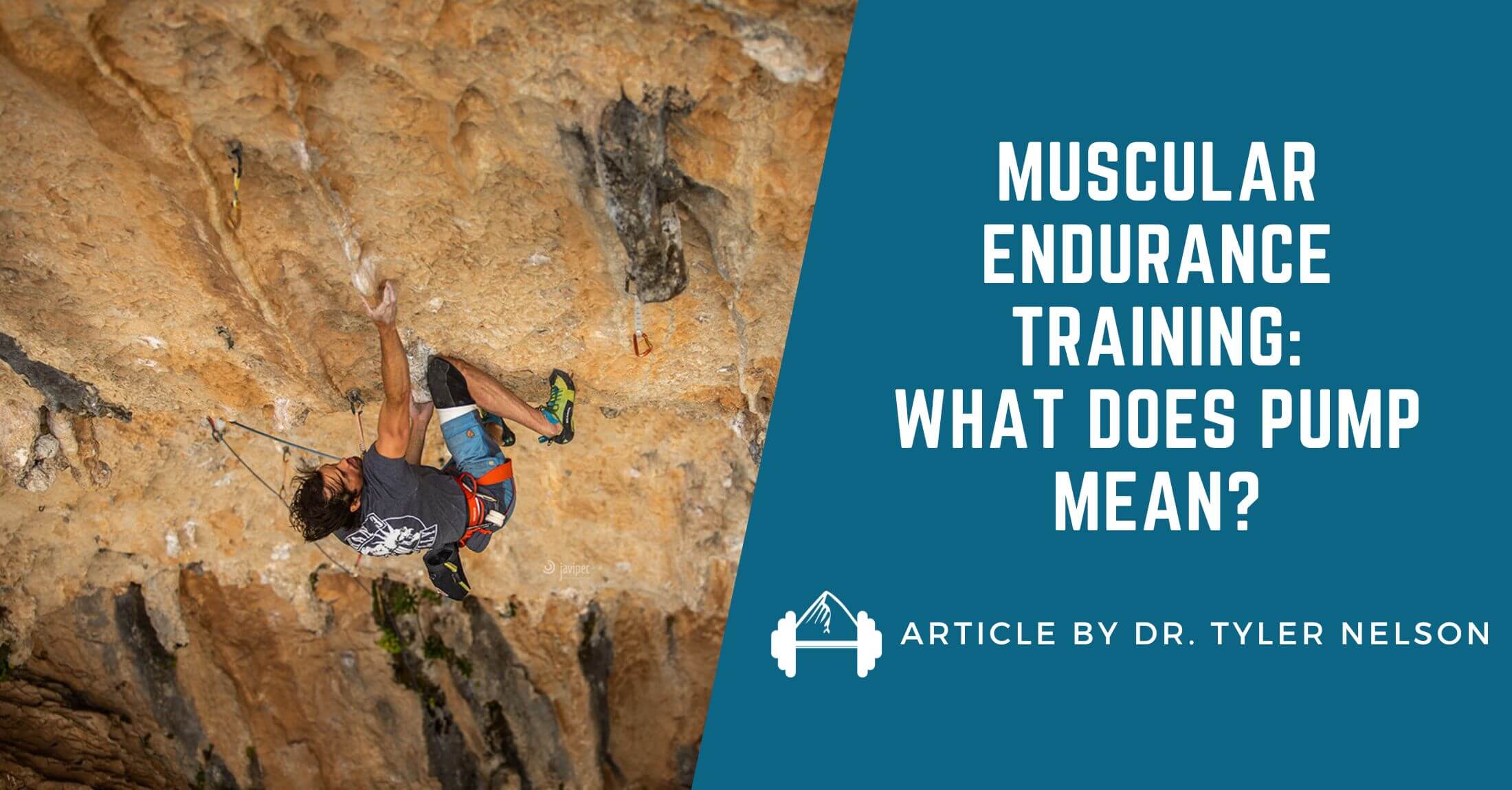Hangboards are the best way to train finger strength. When used properly, they are extremely safe and let us fine tune the intensity of our workouts.
However, for climbers new to training on a fingerboard, the details of different hangboard protocols can feel overwhelming. Luckily, the minutia of the number of sets/reps and the amount of rest aren’t going to make or break your training. In fact, they are probably the least important part of hangboarding.
Most Important Parts of Hangboarding
So, if we aren’t supposed to obsess over the number of sets and reps, what should we be focusing on? Here’s what is really important:
Repeatability/Trackability
Successful hangboard protocols need to be both repeatable and trackable. The reason for this is that we need to be able to see how our training is progressing from session to session and then eventually from cycle to cycle. By being able to see our results over time, we can know if our training is actually working. After all, none of us started climbing to spend time on the hangboard. If your fingerboarding isn’t making you stronger, then there’s no reason to be doing it.
What this means practically is that going by feel and memory aren’t good enough. Take the time to record your sessions in a training journal. Keep track of all the details – grips used, the number of sets/reps, how much weight you added or subtracted, if/when you failed on any reps. Having this kind of data is invaluable.

Progressive Overload
With any kind of training, our bodies adapt to the stimulus over time. This is what makes us stronger. However, if we want to keep getting stronger, we need to continue increasing the stimulus to force our bodies to keep adapting. This is a basic training principle called progressive overload.
On the hangboard, we can do this two ways:
- Increase the load/weight we are hanging
- Decrease the size of the edge
Regardless of which way we progress our hangboarding, it’s important to remember we shouldn’t be thinking about increasing the difficulty every session. We want to see strength gains over time and we need to give our fingers a chance to adapt to the training. Progressing hangboard training too quickly can lead to injury. Be patient here. Afterall, the goal is to improve our climbing, not hurt ourselves hangboarding.
Consistency Over Time
This brings us to our final important consideration. For hangboard protocols to be effective they need to be done consistently over time. Tendon strength is one of the slowest things to develop. Because of this, the hangboard training you are doing today isn’t for this weekend. We should think about training finger strength as playing the long game. Pick a protocol and stick with it. Not just for a couple sessions, but for multiple cycles. By doing so, you’ll be able to look at your results and know you are actually getting stronger cycle to cycle.
Most Common Hangboard Protocols
Now that we’ve covered these underlying concerns, let’s look at the two most common hangboard protocols: max-weight dead hangs and repeaters.
Repeaters
The repeater protocol is probably the most widely used form of hangboard training and was popularized by the Anderson Brothers and their book The Rock Climber’s Training Manual.

Repeaters consist of doing a relatively short, timed dead hang followed by a brief, timed rest and repeating this for several repetitions. This same format is then used on different grips.
Remember, the exact details of how long you hang/rest are less important than tracking your training to ensure you are achieving a progressive overload over time. That being said, commonly used hang/rest intervals are 10 seconds on/5 seconds off and 7 seconds on/3 seconds off.
For a more in-depth look at the repeater protocol (and how to hangboard effectively for that matter), check out this Hangboarding Guide Mike and Mark put together for TrainingBeta.
Max-Weight Dead Hangs
The max-weight dead hang protocol is just as simple as repeaters and consists of doing short, timed dead hangs with the most possible weight added (or least amount subtracted) from each grip.

[photo courtesy of Eric Hörst of trainingforclimbing.com]
The key, however, to the max-weight protocol is taking enough rest so that you can give a maximal effort every hang. It will definitely feel like you are trying hard, but you shouldn’t be getting pumped or sweaty. I recommend climbers rest AT LEAST 3 minutes between hangs. The key part of that recommendation is the “at least.” If you feel like you need to take another couple minutes of rest to put forth a quality effort, then take it.
For a more in-depth look at the max-weight protocol, take a look at this article by training guru Steve Maisch.
Strength to Strength Endurance Spectrum
Ok, so now that we understand the basics of these protocols, which one should you pick?
Well, the answer to this question really lies in what EXACTLY you are trying to train. Sure, both protocols will help you get stronger fingers, but they aren’t doing so in the same way. The best way to differentiate between the two is to think about them lying on a spectrum of strength to power/strength endurance.

With max-weight dead hangs, you are performing a high-intensity exercise at a high load for a low number of repetitions and aren’t concerned with the amount of rest. This is a pure strength training protocol.
With repeaters, the rest is strictly limited. As a result, the load is lower and you perform a higher number of repetitions. This type of hangboarding is moving away from a pure strength training protocol towards a power/strength endurance protocol. Obviously, this doesn’t mean doing repeaters isn’t going to make your fingers stronger. It just means from a technical perspective it is less of a pure strength exercise.
So, if you are looking to really target your max finger strength so you can use smaller and smaller holds, I’d recommend using a max-weight dead hang protocol. However, if you are a climber who struggles with power endurance or are a boulderer trying to focus more on route climbing, then training with a repeater protocol may help you target some of your personal weaknesses.
Just remember: no matter what protcol you pick, if you make sure your hangboarding is repeatable/trackable, achieves progressive overload, and you stick with it over time, you will get stronger fingers. Take your pick and don’t worry too much about all the minutia. Just TRY HARD!
Cover photo courtesy of Matt Pincus | @mpincus87
About The Author, Matt Pincus
Matt is a boulderer and a sport climber from Jackson, Wyoming, and sometimes in his van on the road. He’s responsible for most of the blog posts and social media posts for TrainingBeta. He’s a seasoned climber and trainer who can provide you with a climbing training program from anywhere in the world based on your goals, your abilities, the equipment you have, and any limitations you have with time or injuries.
Train With Matt
Matt will create a custom training program designed to help you target any weaknesses so you can reach your individual goals. Whether you need a 4-week program to get you in shape for an upcoming trip or a 6-month program to make gradual strength gains, he’ll create a weekly schedule of climbing drills, strength exercises, finger strength workouts, and injury prevention exercises tailored to your situation.

Matt Pincus sending Ghost Moon 5.13d/8b at The Wild Iris, WY





I thought i should point out this scientific article written by the spanish climber and coach Eva Lopez
It’s nice to see climbing getting scientific 😉
Don’t forget that achieving progressive overload can also be achieved by increasing volume of training rather than just increasing intensity or decreasing hold size. Steve Bechtel has some very useful information on this topic as well as some finger strength training plans that cycle between increasing intensity and increasing volume (i.e. adding more hangs per session) while keeping intensity the same.
Nice article, thank you 🙂
100% agreed! Choose a simple routine and stick to it. Don’t forget a steady slight progression (longer tine on or a bit of added weight). For me – and I presume a lot of other people – works well:
10 x (10 sec ON – 50 sec OFF) should be really hard at the end near failure
3-5 min Rest
repeat 3 to 5 times
Frequency: 2-3 per week
Have fun!!!!